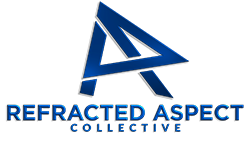
In many growing businesses, the sales process often hinges on the expertise and intuition of a few key individuals. This reliance can create operational tension that quietly undermines growth and consistency. Understanding how much of your sales process depends on individual know-how versus documented, repeatable steps is critical to scaling effectively.
- The Hidden Bottleneck: When Sales Depend on One Person’s Expertise
- Why This Dependency Persists in Capable Teams
- First Steps for Lean Teams: Shifting from Know-How to Know-How-To
- Scaling Fast: How Individual Know-How Breaks Workflows and Alignment
- Stopping the Drag: Creating Clarity Amid Rapid Growth
- Preparing for Succession: Preserving Sales Know-How Beyond Individuals
- Living the Reality: How Sales Know-How Dependency Feels Day-to-Day
- Frequently Asked Questions
- Reframing the Sales Know-How Challenge
- Partnering with Refracted Aspect for Clarity and Growth
The Hidden Bottleneck: When Sales Depend on One Person’s Expertise
Consider a scenario where a sales lead, who has built strong client relationships over years, is the sole source of critical sales knowledge. This individual knows the nuances of client objections, pricing flexibility, and negotiation tactics that aren’t captured anywhere else.
When this lead is unavailable—due to vacation, illness, or departure—the sales process stalls. Other team members struggle to pick up where they left off, leading to missed opportunities and delayed deals.
The business feels the impact in real time: stalled decision-making, frustrated clients, and a sales pipeline that doesn’t flow smoothly. Yet, the problem often remains unspoken because the individual’s know-how is seen as an asset, not a risk.
This operational tension is not about complexity but about a single point of failure that quietly drags on growth. The business is caught between wanting to leverage expertise and needing a scalable, reliable process.
Why This Dependency Persists in Capable Teams
The root cause is often an embedded decision habit: leaders and teams default to relying on trusted individuals rather than documenting and standardizing processes. This shortcut feels faster and less bureaucratic in the moment.
Over time, this habit becomes structural. Knowledge lives in heads, not handbooks. Informal communication replaces formal workflows. The team adapts around these gaps, creating workarounds that mask the underlying issue.
Leadership may recognize the risk but underestimate how deeply this dependency is woven into daily operations. The “quick fix” mentality wins out because it keeps deals moving, even if it sacrifices long-term stability.
What looks like agility is often a fragile system propped up by individual effort. This reality is what keeps the problem alive, not a lack of capability or intention.
First Steps for Lean Teams: Shifting from Know-How to Know-How-To
For solo founders or small teams, the challenge is balancing immediate sales demands with the need to capture knowledge. The first meaningful shift is to start documenting the sales process in real time, even if imperfectly.
This doesn’t require complex software or layers of management. It can begin with simple tools—shared documents, checklists, or brief call summaries—that capture key client interactions and decision points.
The goal is to create a living reference that others can consult when stepping in. This reduces the risk of stalled deals when the primary salesperson is unavailable.
Making this shift is less about perfect process design and more about changing the mindset: from “I’ll handle this” to “How can we make this repeatable?” It’s a practical move that keeps the wheels turning while building resilience.
Scaling Fast: How Individual Know-How Breaks Workflows and Alignment
When a business grows faster than it stabilizes, reliance on individual know-how fractures workflows across departments. Sales teams may close deals based on informal promises that operations or finance aren’t prepared to fulfill.
This misalignment creates bottlenecks downstream—production delays, billing errors, or customer service challenges—that compound over time. The sales team’s agility becomes a source of friction rather than strength.
Marketing may struggle to generate leads that fit the undocumented sales approach, while leadership faces conflicting reports on pipeline health and revenue forecasts.
These ripple effects are often invisible until they manifest as missed targets or employee burnout. The problem isn’t isolated to sales; it quietly drags on multiple areas, creating systemic inefficiency.
Stopping the Drag: Creating Clarity Amid Rapid Growth
In fast-scaling teams, the priority is to reduce friction without halting momentum. This means clarifying roles, formalizing key handoffs, and establishing simple, shared protocols that everyone understands.
Communication must become more intentional. Regular check-ins focused on process rather than just outcomes help surface gaps before they escalate.
Leadership should focus on removing duct tape from processes—replacing patchwork fixes with straightforward, scalable solutions that don’t require perfect execution but do create predictability.
This approach eases the burden on overloaded operators and aligns departments around a common way of working, making execution smoother and less prone to breakdown.
Preparing for Succession: Preserving Sales Know-How Beyond Individuals
When owners or leaders plan for succession, sale, or systemization, individual know-how becomes a liability if it’s not captured and shared. Long-standing habits and unspoken roles create invisible dependencies that threaten continuity.
The initial shift is to make the implicit explicit. This means documenting critical sales knowledge in a way that respects legacy but doesn’t rely on memory or informal mentorship.
Preserving trust with clients and retaining insight within the team requires transparent communication about changes and a commitment to building systems that can stand independently.
This step is about enabling the business to operate reliably without the original knowledge holders, making handover possible without disruption.
Living the Reality: How Sales Know-How Dependency Feels Day-to-Day
In daily operations, this issue shows up as recurring friction and awkward handoffs. Salespeople might say, “We’ll deal with that later,” when a client raises a complex question, pushing problems down the line.
Clients who don’t fit the usual profile generate repeated complaints because the team lacks a documented approach to handle exceptions.
Manual fixes become routine, and informal workarounds are accepted as normal. Conversations often circle back to the same issues without resolution.
This creates a quiet drag on morale and efficiency, as the team juggles firefighting instead of focusing on growth. The business runs fast but never quite catches up to its own complexity.
Frequently Asked Questions
How do I know if my sales process relies too much on individual know-how?
If deals frequently stall when a key salesperson is unavailable or if others struggle to answer client questions without that person, it’s a strong sign. You’ll also notice inconsistent messaging or repeated manual fixes that aren’t documented anywhere.
What’s the simplest way to start documenting sales knowledge without slowing down the team?
Begin with lightweight tools like shared notes or brief call summaries. Focus on capturing key client objections, pricing decisions, and next steps. This doesn’t have to be perfect—just consistent enough to build a reference others can use.
Why do capable teams keep falling into this trap despite knowing the risks?
It’s often a habit of prioritizing speed over process. Trusted individuals feel faster and more reliable in the moment, so teams default to informal communication. This shortcut becomes embedded and hard to break without deliberate effort.
How can I align sales with operations when the sales process is informal?
Start by clarifying what information operations needs to fulfill sales promises. Establish simple handoff protocols and regular check-ins focused on process alignment. This reduces surprises and builds shared accountability.
What’s the first step to prepare sales knowledge for succession or sale?
Make implicit knowledge explicit by documenting critical sales processes and client insights. Communicate openly with your team about the importance of this shift to preserve trust and ensure continuity beyond individual contributors.
Reframing the Sales Know-How Challenge
Relying heavily on individual sales expertise without documentation carries hidden costs: stalled deals, misaligned teams, and fragile growth. Addressing this tension requires shifting perspective from valuing speed alone to valuing repeatability and resilience.
Progress looks like a sales process that can operate reliably regardless of who’s at the helm. This shift reduces risk and unlocks scalable growth. Recognizing this is not a one-time fix but a critical lens for ongoing operational health.
This article offers a grounded view of that tension, inviting leaders to see beyond symptoms and understand the structural dynamics at play. It’s one question among many that shape sustainable scaling.
Partnering with Refracted Aspect for Clarity and Growth
Refracted Aspect works with founder-led and leadership-driven businesses that already have traction and the accompanying weight of responsibility. These are operators who know their market, feel the operational strain, and want an outside perspective sharp enough to see what they can’t.
A Discovery Call with Refracted Aspect is exactly that: a practical, working discussion between peers who’ve both been in the trenches. We’ll talk about the internal dynamics you’re seeing, the challenges you’re working around, and the objectives that matter most. It’s not a sales funnel disguised as a meeting. There’s no script to “handle objections.” The goal is clarity, to give you a fresh, objective read on your current position and the options in front of you.
















